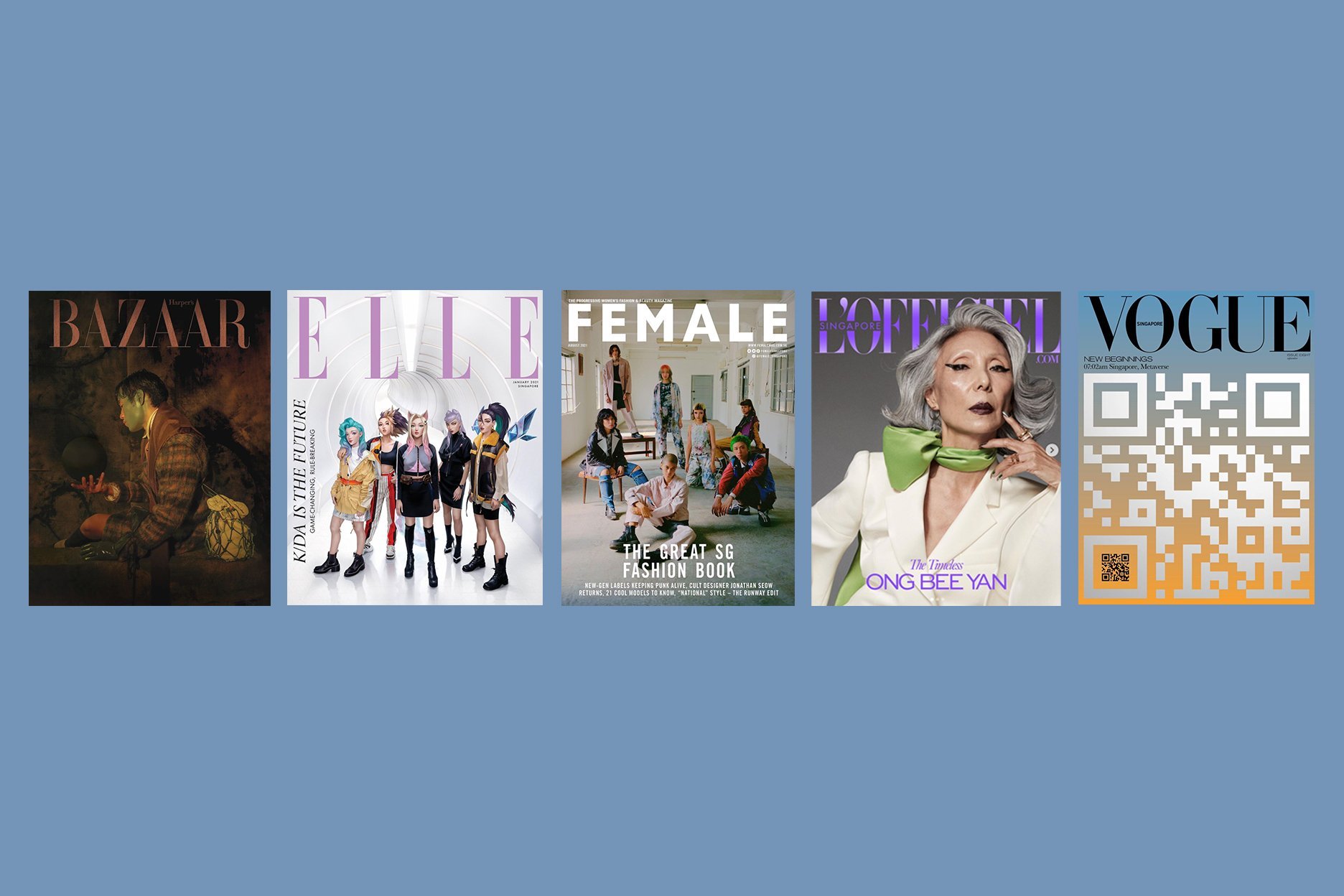My Own Words: Xingyun Shen
Pursuing a critical fashion education and practice
By Xingyun Shen
In August this year, I moved to Arnhem, a small city in the eastern part of the Netherlands, to pursue a master's degree in Critical Fashion Practices at ArtEZ University of the Arts.
As its name suggests, the course challenges the dominant narratives of fashion – one that is mainly industrial and commercial, leaving little room for alternative practices to flourish. The programme seeks to amplify and celebrate these alternatives, equipping participants with artistic research skills, an expansive praxis, and theoretical knowledge for developing a critical fashion practice.
MA Critical Fashion Practices wing. Photo by Fiore Farhand.
I have worked in Singapore’s sustainable and critical fashion spaces, and know these alternatives exist. I admire many fashion practitioners and practices in Singapore, some of whom I have been fortunate to work with over the last three years. I am lucky to have experienced fashion as a place for love and generous capacities.
These experiences were heartful and filled me with joy, but were unsupported infrastructurally. Nearing the end, I found myself stuck in a loop of disillusionment, emotional burnout, and financial immobility from dealing with structural roadblocks and bureaucratic bottlenecks. This makes where I am now an indulgent, fruitful, and important change of scenery. Here, I do not have to justify the fashion I wanted to write and talk about – all types of fashion practices can take shape and thrive. Bluntly put, I have bought myself extra time to write and research parts of fashion I find compelling and fascinating.
A pocket zine of disruptive strategies Xingyun made as part of the course’s Opening Workshop hosted by alumni Tjerre Lucas Bijker and Malú van der Bijl. Photos by Fiore Farhand.
Together with other participants from Italy, Germany, Romania, and Columbia, we are a small group of six artists, designers, tailors, writers, and community organisers. As a “generation,” we work with frameworks unconventional to the formal education I had been used to.
In 2022, Chet Butger, head of the programme MA Critical Fashion Practices, and Hanka van der Voet, researcher, lecturer, and founder of Warehouse, co-authored “A Fruiting Body of Collective Labour: Working Towards a De-Hierarchised System for Fashion Education,” a paper on how the fashion education industry needs to move away from perpetuating and normalising harmful and toxic pedagogical industrial “standards.” This teaching philosophy is indicative of the programme’s curriculum and execution. Due to the size of each generation—intentionally kept small—lecturers keep the structure of classes relatively free to cater to spontaneous and thoughtful sharing.
At this point, I wish to give credit to fashion and art educators in Singapore whom I know incorporate values of shared knowledge and mutual understanding into how they approach their teaching methods and philosophy. I am lucky to call some of them my friends: Pixie Tan, Daniela Monasterios-Tan, Weiqi Yap and Angelene Wong.
One of my favourite parts of the course is the feedback loops implemented to privilege participants’ feedback and assist curriculum planning. This aligns with the course’s values of de-hierarchising the layers of fashion education and “questioning the archetypal standards present in every aspect of the fashion education system.”1
Library shelves in the hallway. Photo by Fiore Farhand.
Our curriculum converges into two brackets: content bodies and artistic research methods. The former includes classes like Making Public(s), Fashion and Body Politics, and Online Fashion Systems, and the latter involves developing new personal approaches that challenge discourses in and around fashion. The outcome is a safe space (overused but apt in this case) where ideas and bodies, typically rejected by the dominant fashion system, grow.
This space spotlights the criticality for practitioners to understand their position in social and environmental justice movements. Artist and professor Bianca Nozaki-Nasser wrote a love letter to designers about the need to perpetually criticise the new worlds we build. 2 “If designers fail to understand or even acknowledge their own relationship to systems such as white supremacy and capitalism,” she writes, “then it is impossible for them to speculatively reimagine them. Without this starting point of self-awareness, designerly attempts to solve social issues just become objects that uphold them.”
There can be limitations of this space turning into one’s own bubble. While protected, I am aware that this bubble may obscure the realities of working outside an educational institution. In the zine publication Who Can Afford to be Critical?, graphic designer and editor Afonso de Matos interrogates critical design institutions' effectiveness and connection with the Real World where designers' survivability is often overlooked. By gathering collective responses from his peers, Matos invites the industry to consider providing fundamental support (in all forms) to practicing designers before they are expected to be agents and provocateurs of the world’s issues.
Coming to terms with these limitations does not diminish the supportive and fertile environment it has created for its participants. On the contrary, confronting the inadequacies of institution-bounded critical practices evokes self-awareness and provides practitioners with further clarity on working outside the bubble.
This (meta) criticality is similarly incorporated into our curriculum. In our classes, we are constantly invited to contextualise the question: “What does it mean to have a critical fashion practice?” and consider how our practice can practically take shape outside the institution.
The bulk of my practice highlights the possibility of appreciating, wearing, and talking about fashion in anti-commerce ways. My way of critiquing the industry started with writing analytical pieces on sustainable fashion. I am currently gravitating towards a new space that allows me to explore various methods that centre the humanity of clothes wearers.
“My way of critiquing the industry started with writing analytical pieces on sustainable fashion. I am currently gravitating towards a new space that allows me to explore various methods that centre the humanity of clothes wearers.”
A collection of written pieces filed under The Writer’s Tongue, Body and Memories as partial fulfilment of Xingyun’s first assignment. Photo by
Xingyun Shen.
By amalgamating my personal and political memories, emotions, and thought processes, I hope to carve out spaces—even if they are just nooks and crannies—for wearers to relate to fashion beyond consumption.
Is critical fashion practising only shapeable in a confined space within education? Is it a mere illusion, dream, or way of escaping from the single dominant fashion system that demands and extracts from the emotional labour and mental capacities of its participants? Am I skilful enough, or like my writing enough, to depend on it to survive financially and be satiated emotionally in this lifetime?
What I have presented above are living, rhetorical questions I hope to seek context in this programme. I trust that I will. I have, after all, bought myself some time.
Notes
Xingyun Shen is a writer and researcher based in the Netherlands. She is interested in bringing out the intimate nature of fashion through text as material. She was the country coordinator of Fashion Revolution Singapore and the editor of MANIFESTO. Find her previous work here.















